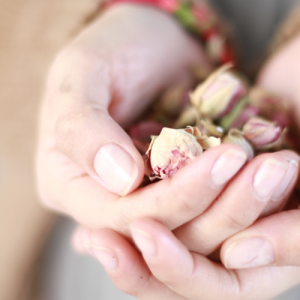Dietary Transformation from the Inside Out
Access a powerful sense of inner authority and self-trust. In food and diet…and beyond.
Course Content
Session Three: Pleasure and Pain

How can we recover the biological guidance of pleasure and pain so that it is reliable? How can we integrate pleasure and discomfort so that we no longer need willpower to make good choices?
Each session, we step more deeply into practice. Previously, I asked you to notice the habits and choices you want to shift, to stay with questions that might open you up to receiving answers you didn’t know were within you. This time, we explore the role of pleasure and pain in our diet and in our lives.
Last session included a practice of awakening to a habitual choice and then holding attention on a question, in order to uncover underlying unmet needs and desires. This time, we will elongate that attention and begin transforming it into a “second nature.” Fully integrating the sensory information that accompanies a choice, we access body-level intuitive information that is much more nuanced than any external source of nutritional data.
The learning journey sessions are offered in two parts, both of which are equally important. Please be sure listen to and/or download both:
Part One: Conceptual Discussion
Part Two: Meditation & Practice
Transcript Notes Session 3: Pleasure & Pain
Session “Assignment”
The assignment this session is to practice the three mantras of food sanity. Take some time to consider how you will approach the practice, and choose the one that seems the most relevant to you to focus on. Let me review them in sequence, so you can design your personal approach: The First Mantra: “I can eat as much as I want.”
If you have a habit of overeating, I suggest using the first mantra, “I can eat as much as I want.” When you sit down to a meal, take a pause to short-circuit normal habits of struggle and restraint, and say, “This meal, I give myself full permission to eat as much I want.” You might pause a few times during the meal and ask, “Do I want more?” Give it a few seconds and let the honest answer come to you. That pause is important to preempt habitual eating patterns from taking over. But remember, this isn’t some trick to make you eat less. The Second Mantra: “I can eat whatever I want.”
If you have a habit of eating foods that make you feel bad, then I suggest using the mantra, “I can eat whatever I want.” Perhaps when you are hungry for a snack or looking at your meal options, take a pause beforehand and say to yourself, “For this snack (or meal), I give myself full permission to eat whatever I want.”
Spend a few moments with each of the possibilities. Imagine how you will feel after eating them. This is not a device to bribe or threaten yourself with good or bad anticipated feelings in hopes of influencing your choice. This is an act of deep trust. You trust the choice that comes from the mantra and from imagining the experience beforehand. The Third Mantra: “I allow myself to feel the full effects of everything I eat.”
The third mantra is for everyone. “I allow myself to feel the full effects of everything I eat.” Of course, if you are overeating or making poor food choices, you can also use it to feel and integrate the after-effects. You can also use it if you are navigating a dietary transition and want to access body authority. Are you considering eliminating gluten or dairy for example? Have you made positive changes and are having trouble remember to stick with them? In all these situations, this practice is going to be useful.
Take half a minute sometime soon after your meal or snack to tune in to your body, as we did in the meditation. Tune in again an hour later, and then maybe before you go to bed or when you wake up. Over time, you will develop acute intuitive awareness of what foods serve your body.
All right, enjoy! And…I want to emphasize the word “enjoy.” Because this process is really about pleasure maximization. You get to eat whatever you want! As much as you want! And you get to enjoy the full experience of it.
Optional NAAS Subscription
This course has run as a DIY course, and you are welcome to do it that way. However, for many people it is more powerful to work the material with a group. My business partner and former wife Patsy and I host a network community called A New and Ancient Story (short for NAAS). It is an online network dedicated to reverence in communication. If you would like to participate in it in conjunction with this course, go to the community landing page and read the introduction and posting guidelines. If you feel resonant, you can join through additional subscription. Once you are a member, you will find archives of discussions on course forums on the left menu as well as participating in many features NAAS offers
